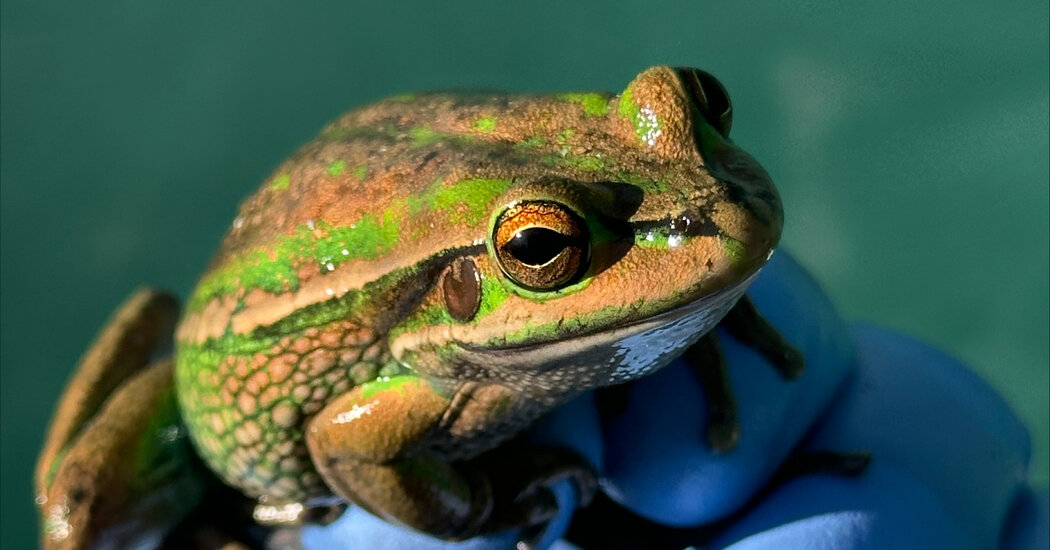A fatal fungal disease has devastated the world’s amphibians. But the fungus has a vulnerability: It cannot tolerate heat.
For decades, a deadly fungal disease has been stalking the world’s amphibians, wiping out frogs, toads and salamanders from the mountain lakes of the United States to the rainforests of Australia. The disease, known as chytridiomycosis, or chytrid, has driven at least 90 species of amphibians extinct and has contributed to the decline of hundreds more, according to one estimate.
“Chytrid is this unprecedented pandemic of wildlife,” said Anthony Waddle, a conservation biologist at Macquarie University in Sydney, Australia. “We’re watching species and populations blink out.”
But, like many formidable foes, chytrid has an Achilles’ heel. The fungus that is the primary culprit — known as Batrachochytrium dendrobatidis, or Bd — flourishes in cool weather and cannot withstand heat.
Now, a new study provides evidence that conservationists might be able to keep the fungus at bay by giving frogs a warm place to ride out the winter. A simple pile of sun-warmed bricks, the researchers found, attracts the green and golden bell frog, a vulnerable Australian species. These thermal shelters boost the frogs’ body temperatures, helping them beat back fungal infections and, perhaps, setting them up for long-term survival.
“If we give frogs the ability to clear their infections with heat, they will,” said Dr. Waddle, the first author of the new paper, which was published Wednesday in Nature. “And they’ll likely be resistant in the future.”
The green and golden bell frog, which used to be common in southeastern Australia, has disappeared from much of the landscape and is now listed as endangered in the state of New South Wales.
